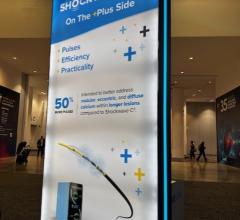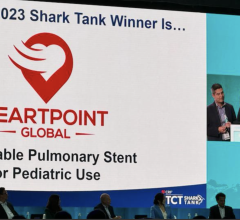
October 26, 2015 — OrbusNeich announced the presentation of the one-year clinical outcomes from the 1,000-patient REMEDEE Registry at the 2015 Transcatheter Cardiovascular Therapeutics (TCT) meeting, Oct. 11-15 in San Francisco. Data was presented by Robbert de Winter, M.D., Ph.D., of the Academic Medical Center, Amsterdam and principal investigator of the study.
The REMEDEE Registry is designed to evaluate the safety and performance of the Combo Dual Therapy Stent for the treatment of coronary lesions in the routine clinical care setting. Patients were enrolled from nine European high-volume percutaneous coronary intervention (PCI) centers.
The registry’s primary endpoint of one-year target lesion failure (TLF) was reported at the incidence of 5.7 percent; TLF is defined as an independently adjudicated hierarchical composite of cardiac death (CD), target vessel myocardial infarction (TV-MI) not clearly attributable to a non-target vessel or target lesion revascularization (TLR) by PCI or by coronary artery bypass grafting (CABG). The individual cardiac event rates reported were 1.7 percent CD, 0.7 percent TV-MI and 4.4 percent ischemia-driven TLR. The registry also showed a very low stent thrombosis rate of 0.6 percent. There was no incidence of late stent thrombosis; all thrombotic events occurred within the first 9 days after implant.
The REMEDEE registry is a true ‘All Comers’ study with patient risk factors that include 18.4 percent diabetics, 58 percent hypertension, 56.2 percent hypercholesterolemia and 37 percent prior revascularization. Thirty percent of the patients presented with acute coronary Syndrome (ACS), comprised of ST-elevation myocardial infarction (STEMI), non-ST elevation myocardial infarction (NSTEMI) and unstable angina, whilst an additional 10 percent of the patients had stabilized ACS. Of the lesions treated, 50 percent were of type B2 and C.
“The one-year outcomes have provided real-world insights that support clinical effectiveness and safety of Combo in terms of low ischemic and thrombotic event rates,” said de Winter.
Other data showcased at TCT 2015 included highlights of the clinical trial program for Combo. During the Didactic Symposia Session focusing on the latest metallic drug-eluting stent (DES) technology, an update on the HARMONEE trial was presented in support of the company’s planned application for Combo approval in Japan and the United States. “With enrollment well under way, we are looking forward to evaluating for the first time how both physiologic and anatomic measures can assess long-term outcomes, as well as using the most technologically advanced high-resolution imaging to show vascular healing,” said Roxana Mehran, M.D., director of interventional cardiovascular research and clinical trials, Mount Sinai Medical Center.
Prof. Stephen W.L. Lee, M.D., of the Queen Mary Hospital, Hong Kong, also presented two-year optical coherence tomography (OCT) findings and three-year clinical follow-up from the EGO-COMBO study. The results supported Combo’s early healing benefits, with a near 80 percent coverage at 2 months. Stability in the long-term was also observed with progressive neointimal maturation without development of late stent failure up to three years. More importantly, significant neointimal regression was observed from 9 to 24 months, a phenomenon unseen with conventional metallic DES.
For more information: www.orbusneich.com


 October 16, 2024
October 16, 2024 








